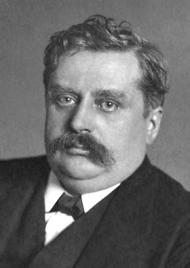At the turn of the 20th century, Marconi began investigating the means to signal completely across the Atlantic, in order to compete with the transatlantic telegraph cables. Marconi established a wireless transmitting station at Marconi House, Rosslare Strand, Co. Wexford in 1901 to act as a link between Poldhu in Cornwall and Clifden in Co. Galway. He soon made the announcement that on 12 December 1901, using a 152.4-metre (500 ft) kite-supported antenna for reception, the message was received at Signal Hill in St John's, Newfoundland (now part of Canada) signals transmitted by the company's new high-power station at Poldhu, Cornwall. The distance between the two points was about 3,500 kilometres (2,200 mi). Heralded as a great scientific advance, there was—and continues to be—considerable skepticism about this claim. The exact wavelength used is not known, but it is fairly reliably determined to have been in the neighborhood of 350 meters. The tests took place at a time of day during which the entire transatlantic path was in daylight. We now know (although Marconi did not know then) that this was the worst possible choice. At this medium wavelength, long distance transmission in the daytime is not possible because of heavy absorption of the skywave in the ionosphere. It was not a blind test - Marconi knew in advance to listen for a repetitive signal of three clicks, signifying the Morse code letter S. The clicks were reported to have been heard faintly and sporadically. There was no independent confirmation of the reported reception, and the transmissions were difficult to distinguish from atmospheric noise. (A detailed technical review of Marconi's early transatlantic work appears in John S. Belrose's work of 1995.) The Poldhu transmitter was a two-stage circuit.
Feeling challenged by skeptics, Marconi prepared a better organized and documented test. In February 1902, the SS Philadelphia sailed west from Great Britain with Marconi aboard, carefully recording signals sent daily from the Poldhu station. The test results produced coherer-tape reception up to 2,496 kilometres (1,551 mi), and audio reception up to 3,378 kilometres (2,099 mi). The maximum distances were achieved at night, and these tests were the first to show that for mediumwave and longwave transmissions, radio signals travel much farther at night than in the day. During the daytime, signals had only been received up to about 1,125 kilometres (699 mi), less than half of the distance claimed earlier at Newfoundland, where the transmissions had also taken place during the day. Because of this, Marconi had not fully confirmed the Newfoundland claims, although he did prove that radio signals could be sent for hundreds of kilometres, despite some scientists' belief they were essentially limited to line-of-sight distances.
On 17 December 1902, a transmission from the Marconi station in Glace Bay, Nova Scotia, Canada, became the world's first radio message to cross the Atlantic from North America. In 1901, Marconi built a station near South Wellfleet, Massachusetts that on 18 January 1903 sent a message of greetings from Theodore Roosevelt, the President of the United States, to King Edward VII of the United Kingdom, marking the first transatlantic radio transmission originating in the United States. This station also was one of the first to receive the distress signals coming from the RMS Titanic. However, consistent transatlantic signalling was difficult to establish.
Marconi began to build high-powered stations on both sides of the Atlantic to communicate with ships at sea, in competition with other inventors. In 1904 a commercial service was established to transmit nightly news summaries to subscribing ships, which could incorporate them into their on-board newspapers. A regular transatlantic radio-telegraph service was finally begun on 17 October 1907 between Clifden Ireland and Glace Bay, but even after this the company struggled for many years to provide reliable communication to others.
(photo source venividivici.us)

